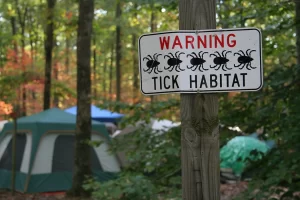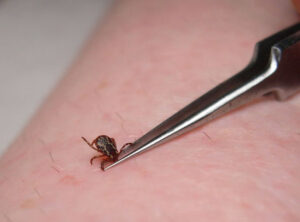The Best Tricks and Tips on How to Avoid Ticks
Tick bites are not only uncomfortable but can also pose serious health risks. Ticks are notorious carriers of diseases such as Lyme disease, Rocky Mountain spotted fever, and Ehrlichiosis. As such, avoiding tick bites is crucial, especially for those who spend a lot of time outdoors. Here are some practical tips to help you avoid tick bites and stay safe while enjoying nature.

1. Understand Tick Habitats
Ticks thrive in grassy, bushy, or wooded areas. They are also found in leaf litter and overgrown fields. Knowing where ticks are likely to be can help you take extra precautions when in these environments.

2. Dress Appropriately
When venturing into tick-prone areas, wear clothing that covers as much skin as possible:
- Long Sleeves and Pants: Wear long-sleeved shirts and long pants. Tuck your pants into your socks or boots to create a barrier.
- Light-Colored Clothing: Ticks are easier to spot on light-colored fabrics, allowing you to remove them before they can attach to your skin.
- Tick-Repellent Clothing: Consider clothing treated with permethrin, an insect repellent that kills ticks on contact.
3. Use Tick Repellents
Applying tick repellents to your skin and clothing can significantly reduce the risk of tick bites:
- DEET: Use a repellent containing 20-30% DEET on exposed skin and clothing.
- Permethrin: Treat clothing, boots, and camping gear with permethrin. Note that permethrin should not be applied directly to the skin.
- Natural Repellents: For a chemical-free option, consider essential oils like eucalyptus, lemon, or cedarwood, which can repel ticks.
4. Stay on Clear Paths
When hiking or walking, stay in the center of trails and avoid brushing against tall grasses and bushes. Ticks are often found at the edges of paths, waiting to latch onto passing hosts.

5. Perform Regular Tick Checks
After spending time outdoors, thoroughly check your body for ticks:
- Inspect Your Body: Pay close attention to hidden areas such as the scalp, behind the ears, under the arms, around the waist, and between the legs.
- Check Your Pets: Pets can carry ticks into your home, so check them thoroughly and use tick prevention products recommended by your vet.
- Shower Soon After Outdoor Activities: Taking a shower within two hours of being outdoors can help wash away unattached ticks.
6. Maintain Your Yard
Keep your yard tick-free by:
- Mowing the Lawn Regularly: Ticks thrive in tall grass, so keep your grass short.
- Creating a Barrier: Place a 3-foot wide barrier of wood chips or gravel between your lawn and wooded areas to restrict tick migration.
- Removing Leaf Litter: Clear out leaves and brush to reduce tick habitats.
7. Treat Your Pets
Protect your pets by using veterinarian-recommended tick prevention treatments. Regular grooming and tick checks are also essential to catch any ticks early.

8. Be Aware of Seasonal Peaks
Ticks are most active in warmer months, typically from April to September. However, ticks can be present year-round in some areas. Stay vigilant and continue preventive measures throughout the year.

9. Know How to Remove a Tick
If you find a tick attached to your skin, remove it promptly and correctly:
- Use Fine-Tipped Tweezers: Grasp the tick as close to the skin’s surface as possible.
- Pull Upward with Steady Pressure: Do not twist or jerk the tick, as this can cause parts of it to break off and remain in the skin.
- Clean the Bite Area: After removing the tick, clean the area with rubbing alcohol, iodine scrub, or soap and water.

Avoiding tick bites requires vigilance and proactive measures. By understanding tick habitats, dressing appropriately, using repellents, and performing regular checks, you can significantly reduce your risk of tick bites and enjoy the great outdoors safely. Stay informed and prepared to protect yourself and your loved ones from these pesky and potentially dangerous parasites.








